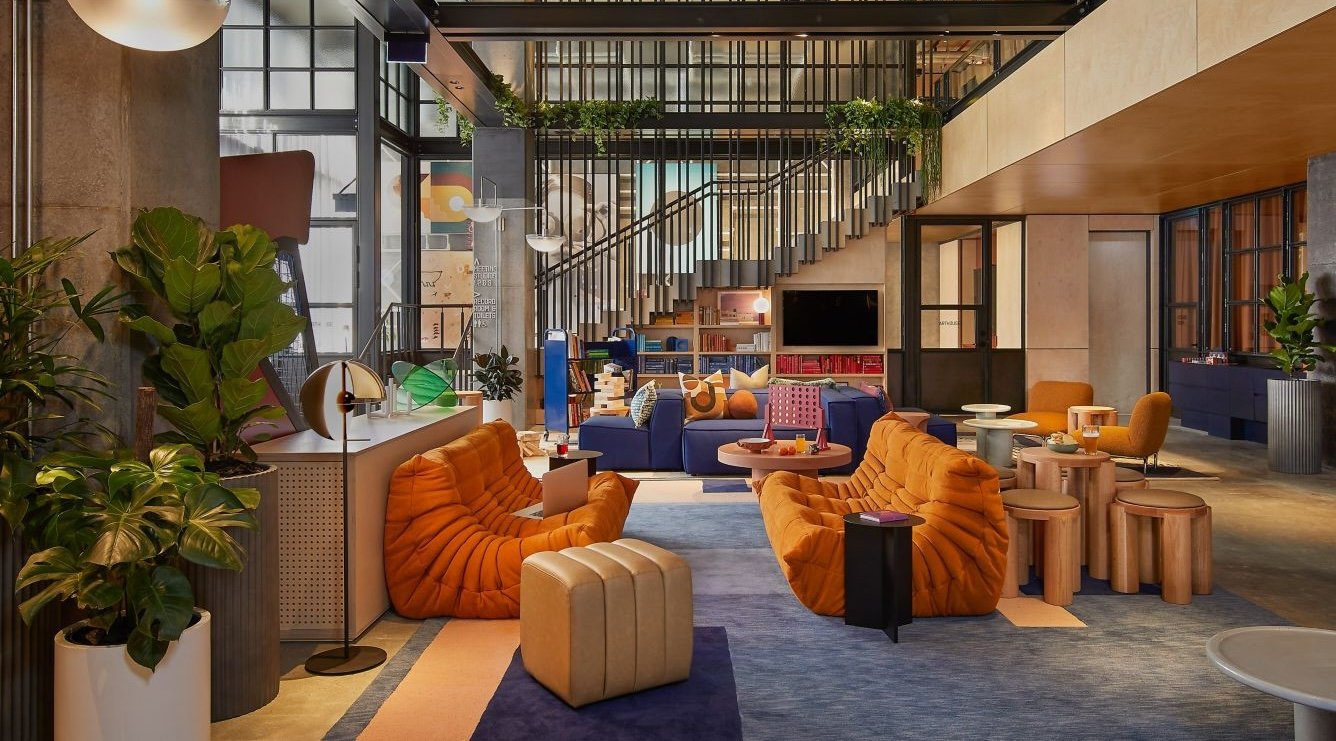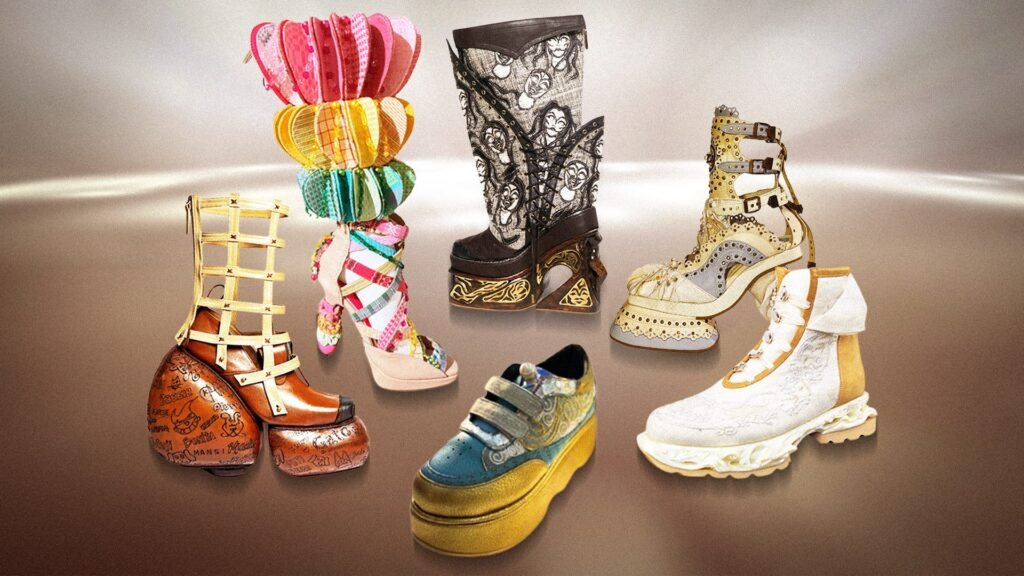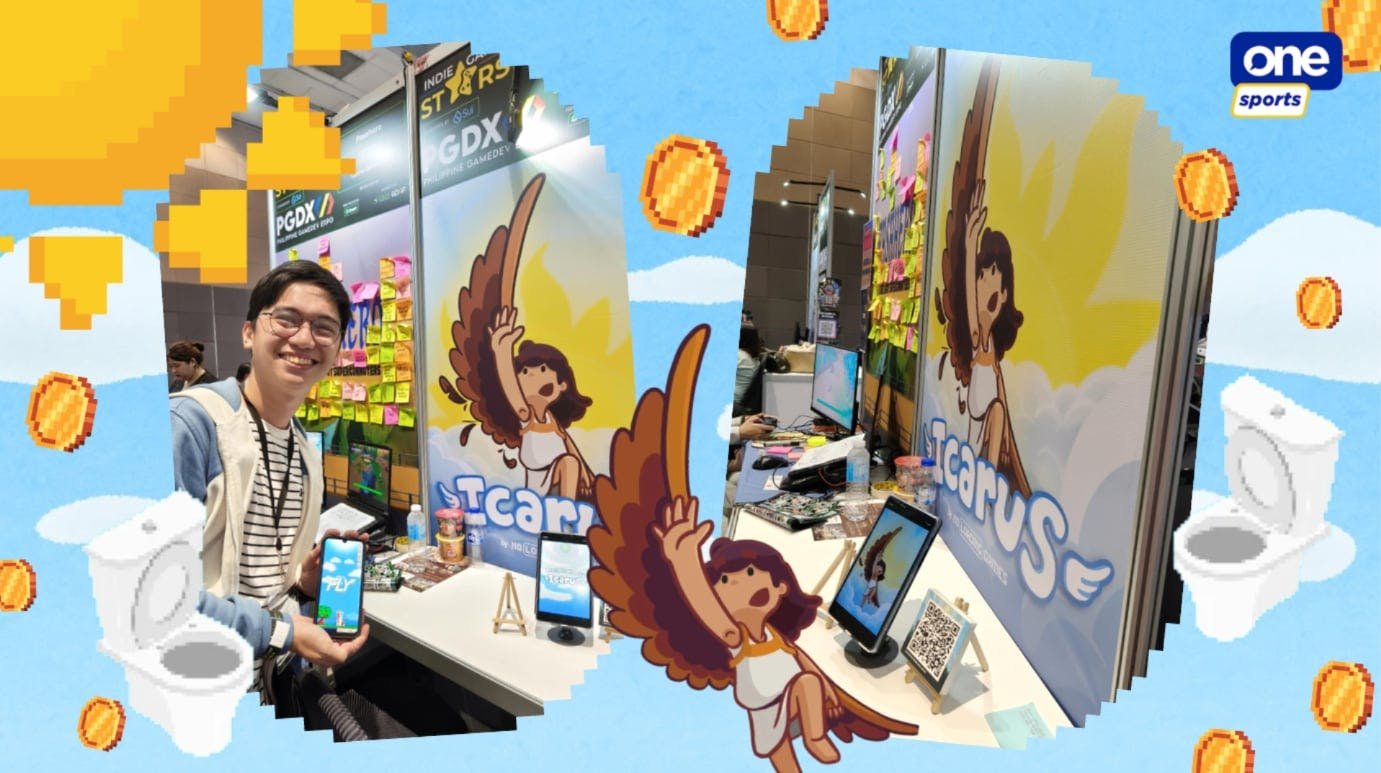Several Filipino footwear designers look to redefine what Pinoy-made shoes mean.
More than the locally sourced weaves and fibers, it’s the spirit behind the designs that make them truly Filipino. Woven into every pair aren’t just the hopes, memories, and cultural values that they aim to preserve, but also the Filipino footwear industry they hope to transform.
And that spirit stepped into the spotlight in the 2025 International Footwear Design Competition (IFDC) in Guangzhou, China, where six local designers won major recognition across various categories.
Unyx Sta. Ana, president and founder of Marikina manufacturing company Zapateria, a five-generation footwear business, expressed pride for the winning designs.
“While we’re not new to this platform, having secured wins in previous editions, I’m glad to observe that our craftsmanship in footwear construction remains competitive among the other entries from abroad, and our design conceptualization has consistently been grounded and well-thought of.”
Each of the winning shoes was meticulously crafted in Marikina, the “Shoe Capital of the Philippines,” a city famed for its centuries-old shoemaking industry, celebrated for its globally competitive quality and the distinct expertise of Marikeño sapateros (shoemakers).

‘Aranya’ by Ely Edullan
Aranya by Ely Knows Enterprises, designed by its owner Ely Edullan, clinched first place in the Enterprise Category.
Featuring bold, festive designs, the footwear draws inspiration from the vibrant kiping decorations of the Pahiyas Festival in Lucban, Quezon, which honors San Isidro Labrador, the patron saint of farmers.
“I want to convey happiness and hope despite the troubles we face as Filipinos, but beyond that, I want to highlight the importance of honoring our farmers,” Edullan shared.
The design’s name, Aranya, stems from the Hindu Sanskrit, meaning forest or a peaceful, bountiful place. This symbolizes the abundance and fortune Edullan wishes to reflect in her creation.
“Nakakatuwa rin po during the competition sa Guangzhou nung pumunta kami. Parang most photogenic po siya. Lahat po ng dumadaan magpapapicture po kay Aranya kahit yung judge,” Edullan said with a smile, recalling how her design became a crowd favorite.
(We were happy during the comepetition in Guangzhou. It was like the most photogenic shoe. Everyone who passed by wanted to have a picture with Aranya, even the judges.)

Edullan’s journey began long before Aranya’s success. Growing up in her father’s machine repair business in Marikina, she was exposed to the potential of discarded leather scraps. At the age of 16, she was able to merge her business acumen and love for designing and turning scraps into slippers.
What began with five sapateros has grown to 20 employees, including elderly and persons with disabilities, whom she proudly supports. During the pandemic, Edullan turned to live selling, connecting with her “mga ka-leather” customers to ensure her employees could continue to provide for their families.

‘Perro’s Freedom’ by Bon Marter
Bon Marter’s Perro’s Freedom, manufactured by Loritess, won first runner-up in the Enterprise Category. It’s a poignant commentary on the often overlooked reality of stray and sheltered animals confined in cages, as Marter explained.
Marter’s design is a tribute to his deep love for animals, especially his 13 rescued cats, whose names are engraved on the iconic midsole of Marter’s creation, alongside the names of the pets of the Perro makers — the sapateros, assemblers, pattern, upper, and heel makers, and everyone else involved in crafting this unique pair.

Marter’s journey into design was personal. Growing up in Marikina, he often noticed his classmates getting new shoes every year, while his mother bought him one-size larger shoes that he could wear until the next year.
“Yung mga schoolmates ko po kasi na yun, mostly yung parents nila ay sapatero po from Marikina (Most of my schoolmates’ parents were shoemakers from Marikina),” Marter shared.
And that’s how he got interested in shoemaking.
Currently, Marter is working on creating replicas and commercial versions of Perro’s Freedom to leverage partnerships with Philippine Animal Welfare Society (PAWS). He plans to donate every cent from the potential sales to support groups and organizations that help stray and sheltered animals.
‘Piñahon’ by Hazel Roldan

Winning second runner-up in the Individual Male Category, Konzept-made Piñahon is a historical and artistic narrative conveyed by the design of fashion designer Hazel Roldan — a thoughtful homage to the evolution of the barong tagalog, reimagined in footwear.
Made with piña fiber, banana cotton textile developed by the Department of Science and Technology – Philippine Textile Research Institute (DOST-PTRI), and genuine leather, Piñahon creatively merges rich heritage and innovation, according to DOST-PTRI.
Its elegant floral embroidery, Laguna’s calado-style cutwork, and subtle Baybayin details reflect the intricate artistry that make Filipino craftsmanship distinct.

“I called it Piñahon, which is a play on piña (fabric from pineapple leaf fibers) and panahon (time), because the barong tagalog has changed through time in terms of how you see it. First, it was a sign of oppression because Filipinos were forced to wear sheer fabric so that we can’t hold any weapons, and into becoming a symbol of opulence,” Roldan explained.
For her, the barong symbolizes transformation. And much like the garment that inspired it, Roldan’s Piñahon walks through time, layered with history, rich in intricate artistry, and grounded in quiet resilience.
‘Pamana’ by Dani Borrero

Dani Borrero’s Pamana, manufactured by the famous Zapateria, won second runner-up in the Individual Children’s Category and was inspired by her insights on the topic of transnational families as she’s currently taking her master’s degree in Family Life and Child Development in UP Diliman, College of Home Economics.
“I wanted to make Pamana to be a commemorative piece. Not just for the immigrant parents, but also for the immigrant children specifically. That’s why I made a children’s shoe,” Borrero shared.
Pamana speaks to the journey of Filipino immigrant children, whose parents had left their homeland in search of better opportunities. The design reflects the emotional weight of this transnational experience.
Borrero expressed that at the end of the day, the true pamana of Filipino parents is not just the privileges and opportunities their children get to experience abroad, but the cultural heritage values and identity they pass down.
“Kasi marami silang privileges eh. And sana ibalik nila yun. Bumalik sila dito at i-share kung ano mga knowledge nila para matulungan i-uplift yung bayan natin at yung pagka-Pilipino natin. Yun yung pangarap ko,” Borrero said, emphasizing how vital it is to stay connected to our Filipino roots, no matter where we are in the world, especially when fortunate enough to enjoy the privileges of living abroad.
(They have many privileges. And hopefully, they give back. They come back to share knowledge that could help uplift the country and the Filipinos. That’s my dream.)

Borrero, along with Edullan, were the only winning Filipino designers who managed to travel to China for the competition. She went there not with the expectation of winning but to properly document the experience and keep her fellow delegates updated.
“I mean, honestly, when I went up to the podium, I wasn’t even prepared, I couldn’t believe it,” Borrero chuckled. “My outfit? Hilarious.”
As a self-proclaimed “chismosang tita (gossiping aunt),” she just wanted to give her fellow Filipino delegates something to look back on, like good photos they could share to friends and families.
‘Alkab’ by Fred Leysa

In the Individual Lady’s Boot Category, 24-year-old fashion designer and educator Fred Leysa’s Alkab, manufactured by Nifty Shoes, made a bold statement of queer identity, earning second runner-up.
Alkab — bakla (gay) spelled backward — was inspired by the concept of masks queer individuals often wear to meet societal expectations.
“I wanted to tell a story that is important today: queer identity. The faces that the queer community puts on to fit in, to live without fear,” Leysa explained.
For Leysa, Alkab was his way of conveying the complexity of living as a Filipino queer individual, capturing both the transformation and the subtle darkness that often accompany the need for self-preservation in the queer experience.

The shoe itself was deeply personal, crafted using Leysa’s own shoe last — a mold customized to his unique foot shape — as he wanted to reflect the fusion of function and emotion, particularly in his advocacy for queer footwear.
Leysa’s entry into footwear design began with a love for fashion sparked at 18 and honed throughout his college years. Though initially set to follow in his family’s medical footsteps, he quickly realized fashion is where he truly belongs.
His personal struggle with finding shoes that fit — being gender-fluid and wanting women’s shoes with a larger, wider male foot — prompted him to design with the queer community in mind.
Leysa initially faced challenges such as ensuring compliance with local competition regulations, while incorporating indigenous materials and textiles. He admitted he doesn’t identify as a cultural or historical designer, but he chose to leverage his strengths as a contemporary artist, blending creative expression with the struggles of today, particularly of the Filipino queer community.
Leysa was declared grand winner of the 10th Filipino Footwear Design Competition held last April 11, the local event that selected the 15 delegates for the 14th IFDC.

‘La Reina de Oriente’ by Maya Castro
Jeremiah “Maya” Castro, a 26-year-old Marikina resident, took home second runner-up in the Individual Female Trendy Category with his stunning creation, La Reina de Oriente, manufactured by Roweliza.
Inspired by Manila Carnival Queen Purificacion “Pura” Villanueva Kalaw, the shoe embodies strength, beauty, and female empowerment — qualities that defined Pura’s trailblazing legacy as a women suffragist and the Philippines’ first beauty queen.
“Lagi ko sinasabi (I always say), I want the Filipinos to be reminded that every vote counts, and vote wisely. That’s Pura Villanueva Kalaw. Naging motto ko na rin ang motto niya (Her motto became my motto),” Castro said, sharing his personal connection to Pura’s advocacy.

Castro, a son of a former Marikina sapatero, has always been immersed in the world of craftsmanship, and his background in dressmaking helped him push boundaries in shoe design.
He started out in tailoring during senior high school, continuing through college with a passion for creating. La Reina de Oriente originally began as a men’s shoe, but Castro’s own experiences with heartbreak and empowerment led him to reimagine it as a symbol of women’s strength.
“Yung manufacturer ko is woman-led (My manufacturer is woman-led). Most of the manufacturers from FFDC are woman-led,” Castro noted, reflecting on the poetic alignment between Pura’s advocacy and the strong women-led businesses that thrive in Marikina today.
What’s the edge of Marikina sapateros?
These designers have worked closely with Marikina artisans and they’re quick to highlight the extraordinary skill and dedication of the people behind every shoe.
“It takes a community to build Marikina made-shoes. Imagine wearing a pair created by Marikina artisans who helped us craft masterpieces,” Castro pointed out.
And to keep up with global trends, Castro thinks there should be more training for local designers and support for small and medium enterprises (SMEs) through empowering institutions like the Philippine Footwear Federation, Inc. (PFFI).
Marter echoes this sentiment, noting that one of the things hindering Marikina’s success, aside from the politicization of industry projects, is the lack of generational knowledge transfer.
“The artisans are incredibly skilled, but there’s a gap in passing down these techniques, he said
Roldan also speaks of the impressive artistry of Marikina’s craftsmen, pointing out that even though they might not admit it, their sense of taste and quality is deeply embedded in them.

To preserve local craftsmanship and uplift the industry, agencies like the Department of Trade and Industry – National Capital Region (DTI-NCR) and DOST-PTRI have launched key initiatives.
Ferdinand Angeles, DTI’s supervising trade industry development specialist at the Center for Innovation and Technology for Enterprises (CITE), highlights the importance of government support — such as training programs and shared service facilities — in sustaining the workforce.
He noted the decline of Marikina’s footwear sector post-pandemic but remains optimistic, citing reports from partners like PFFI that show signs of recovery and business stabilization.
DTI-NCR also continues to train new skilled workers and provide MSMEs with resources to boost production.

Meanwhile, DOST-PTRI advances material innovation through its SAFATOS (Shoes and Footwear Accessories from the R&D on Textile-based Omnibus Solutions) program, introducing sustainable, locally sourced materials like banana fibers, coco coir, and bamboo.
Beyond materials, DOST-PTRI aims to build a sustainable ecosystem for collaboration across textile and footwear sectors.
“We are currently in negotiations with industry players, including Nifty Shoes, Gibi, Konzept Shoes, Zapateria, and Creative Definitions that have already expressed interest in using the various textile material developments, sizing system, and innovative footwear product development,” a DOST-PTRI representative said.
Young designers, local artisans can thread industry together
A growing collaboration between young designers and local artisans in Marikina is reshaping the footwear industry. Events like the Filipino Footwear Design Competition (FFDC) and the International Footwear Design Competition (IFDC) showcase this synergy, merging innovation with traditional craftsmanship.
“The FFDC is a great opportunity for designers to work with artisans to create their own shoes,” Borrero said.
Leysa added, “It’s our generation’s responsibility to introduce fresh new ideas… it’s up to us to bridge the gap between the new and the traditional. This connection can help generate fresh designs, build brands, and create jobs.”

Roger Py, PFFI director general and a world-class manufacturer and exporter known for being the maker of Gibi, underscores this shift, recalling:
“I was handling it myself for about seven years (the entries passed to IFDC), but nothing was happening. I wasn’t winning. In 2018, I passed it on to the younger generation, to Zapateria, and they won the first year right away. Since then, I’ve left it to them to handle.”
Edullan also hopes manufacturers embrace e-commerce and collaborate with young talents to ensure the industry thrives in the long run.
Filipinos, walk the talk
Marter, whose design was awarded as Best in Story Execution at the 10th FFDC, highlights that a truly Filipino product is not merely defined by the indigenous materials it’s made from, but by the story it carries.
And so, in a world driven by fleeting trends, Filipino designers are walking a different path — one rooted in meaning.
But as the Marikina and Philippine footwear industry continues to evolve, it is imperative that consumers also play their part. Roldan, who advocates for sustainability and supporting local products, stresses the importance of purchasing locally made shoes.
“I think visibility is needed, maybe just walking the talk would help. Wearing local will spark conversations,” she said.
The Marikina footwear industry needs the support of both local and international consumers. The collaboration between artisans, designers, government agencies, and consumers is vital for the industry’s revival.
By choosing Marikina-made shoes, citizens can contribute to the resurgence of Filipino craftsmanship and help secure a sustainable future for the industry.
As the global spotlight shines on local designers, it’s time for Filipinos to step forward, wear local, and walk the talk. – Rappler.com









